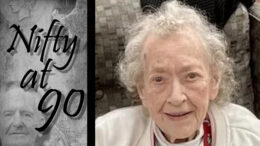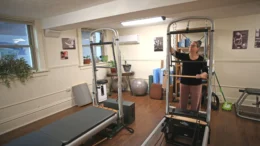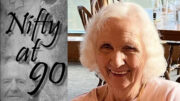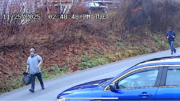A local chapter of an international anti-trafficking organization, the Set Free Movement, is working to raise local awareness of the signs of human trafficking and give people tools to fight it.
In 2021, the U.S. National Human Trafficking Hotline received reports of 10,359 situations of human trafficking involving 16,554 individual victims.
In Pennsylvania, the hotline identified 192 cases involving 315 victims in 2021, according to data from the Human Trafficking Hotline’s website, and these are only the confirmed cases that were reported to the hotline.
The mission of the Set Free Movement is “to mobilize faith communities, financial partners, and all segments of society toward ending human trafficking and creating new futures through community-based action,” according to its website.
“Human trafficking is defined as anyone doing anything against their will for the profit or pleasure of another,” Allman told the newspaper. “If you expand your definition of trafficking, it opens our awareness to see it and look for it in ways that we wouldn’t have.”
Similarly to many crime situations, poverty, broken families and relationship breakdown are all risk factors that make it easier for individuals to be trafficked, Allman said. “It’s a symptom of a much greater problem, which is relationship breakdown,” she added.
Often, trafficked individuals know and trust their trafficker first to some degree, she said, especially if the victim is young and the trafficker offers affirmation.
Allman said this can particularly happen online, where traffickers can pretend to be someone they are not, such as a classmate.
Traffickers can, sadly, also often be family members or romantic partners, she said.
And while sex trafficking is often the first kind of trafficking that comes to mind, Allman said labor trafficking is also prevalent and can be seen in fields like hospitality, manufacturing, agriculture and construction.
While it’s not something she has encountered in the area, Allman said she has heard reports of labor trafficking from Set Free team members in Pittsburgh and even Butler, and she added that one way that labor trafficking does touch the local area is through “the things we buy.”
“We are all touched by the forced labor aspect,” she said, as many products are made using forced labor. “It’s in our cupboards, in our closets, our kitchens, across the street, around the corner. It affects all of us in that respect,” she said.
She said one very important way for people to fight human trafficking is through being selective about their purchasing.
“Start looking for companies that align themselves with fair trade and sustainable practices,” she said. She added that some brands, such as Levi’s, are known for their anti-trafficking stance, although they may be a bit more expensive than the very cheap items that have become common now.
On the other hand, she said, products made without forced labor tend to be “better-made, and last longer.”
He said that during his time as constable, he became more aware of trafficking issues and signs in recent years after being introduced to Allman and the Set Free movement.
“There’s no doubt in my mind, some people in past years that I’ve run across were victims of trafficking, but we didn’t know what the signs were then,” he said last month.
He noted that education is “key” to fighting trafficking. He added that the Set Free Movement and organizations like it, or state programs, play a crucial role in teaching the public to recognize trafficking in all its forms.
“Law enforcement can’t do it all,” Westover said.
Westover has seen signs posted by state police at public restrooms on how to recognize human trafficking, and he added that PennDOT has started training its employees to recognize the signs.
“A lot of people don’t believe things are occurring in their backyard, and then when it does, they’re shocked; they can’t believe it happened here,” Westover said. “But by educating people on the signs of trafficking, bringing awareness to the local community, people can recognize it and bring the reporting to the proper authority.”
“Our brochure for the team says ‘be aware, be educated, take action’,” Allman said. “Awareness saves lives.”
Allman said that if someone encounters a situation that they believe to be a trafficking situation, or an individual who they believe is being trafficked, rather than intervene themselves they should call the human trafficking hotline at 1-888-373-7888. They can also text HELP to 233733 (BEFREE).
“When seeing somebody out and about who avoids eye contact, or seems to be clinging to a person, and they seem anxious or fearful and not speaking up for themselves, those are really good indicators,” Allman said. “If they look abused and malnourished, those would be really good indicators to call for trafficking.”
Other indicators the Set Free Movement lists on its brochure include a person appearing to have few or no personal possessions, not being in control of their money or identification, saying they are “just visiting” without being able to say where they are staying, having numerous inconsistencies in their story, wearing provocative clothing that is inappropriate for the weather, and having multiple hotel keys.
Sudden changes in behavior or sudden possession of luxury clothes or items may also be indicators.
In addition to mindful purchasing, supporting anti-trafficking organizations and calling the human trafficking hotline, a simple way to take action is to be neighborly, fighting the breakdown of relationships in the community, Allman said.
“Being a good neighbor, that’s action,” she said.
She mentioned the websites setfreemovement.com or polarisproject.org as good resources for community members wishing to educate themselves and learn more about taking action against trafficking.
“We can all do something,” Allman said. “Even if it’s helping that neighbor down the street, or a youth that you just know has a vulnerability.”































